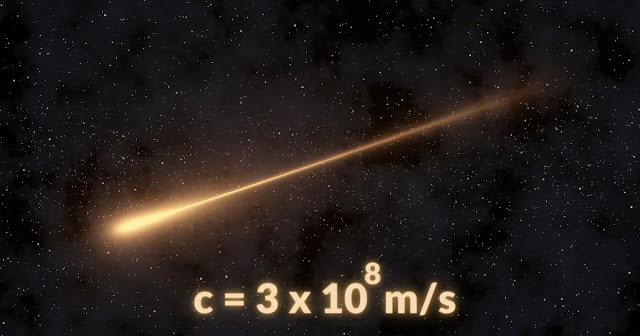TRAVELLING LIGHT
Doesn't matter if you are a renowned astrophysicist or a curious student like me, chances are most likely you would have heard of that no matter hard you try nothing can travel faster than light. The statement seems quite simple at first but has some astonishing implications in the realm of physics. So why really we can't break the ultimate speed limit and what lies hidden deep in the fact. That's what we will find out in this article.
So, first of all, we need to understand about FRAMES OF REFERENCE, a frame of reference can be understood as a point of view or a perspective. Every observer has its own frame of reference, and different observers might not agree on the same events according to their own frames of reference.
For example: let's say that you are standing still on a railway platform while I am on a train that will cross the railway platform from left to right at 40 km/hr at which you are standing. I am also standing still inside the moving train. Now when the train will cross the platform I will see you move from left to right and I will say that I was stationary while you were moving from left to right at 40 Km/hr but you won't agree about this and you will say that I was stationary while you were inside a train that just moved from left to right at 40 km/hr.
This seems quite confusing at first and you will probably think that the person which is actually moving is me which is inside the moving train at 40 km/hr. But how can you say that? I can equally say that I was standing still in my frame of reference which is the train and therefore I was not moving relative to the train. Now a person which is in outer space in a space shuttle will say that both I and you were moving. I was moving at around 1040 miles per hour and you were traveling at 1000 miles per hour due to the rotation of the earth.
Now among these observers, everyone makes a different observation about each other so who is correct. Well actually, everyone.
The important thing to understand here is that motion is relative so whenever you ask that whether something is moving or not I will ask you RELATIVE TO WHAT. since you are stationary relative to Earth and I am stationary relative to the train, the person which is in outer space is stationary relative to the outer space.
Now we need to understand inertial frames of reference:
An inertial observer or an inertial frame of reference is just an observer which is stationary or moving with a constant velocity relative to something. ( A-frame which is not in acceleration)
Some important things to remember about frames of reference:
1. Every observer is stationary in his own frame of reference.
2. The speed of light is the same for every inertial observer.
If you have any problem understanding frames of reference you check out this awesome old video from MIT:
Now we need to understand Einstein's second postulate:
Every inertial observer whether moving or not should always agree about the speed of light and it is always constant.
So let's imagine another scenario:
You are hovering on a spaceship near the Earth while your friend Bob is in a spaceship near you which travels at the speed of light.
Now at time t=0, the spaceship starts its engines and its headlight at the spacetime. now for Bob who is inside the spaceship, it measures the speed of its own vehicle to be the speed of light while it measures the speed of the headlight of its spaceship to be two times the speed of light.
While you who was hovering in a spacecraft near the planet measures both the spaceship of bob and its headlight to be at the same point at all the time since they both are traveling at the same speed( speed of light) and they both also started at the same time.
Now here is the problem the observer who is stationary ( you) measures the speed of light of both the spaceship of bob and its headlight to be the same while Bob measures the speed of its own spaceship to be stationary and the speed of the headlight to be the speed of light relative to the spaceship.
For a simpler explanation: Bob measures the speed of the headlight to be moving at the speed of light relative to the spaceship so the spaceship according to the inertial observer Bob is always light speed behind the spaceship while the inertial observer(you) measures the speed of spaceship and the speed of headlight to be the same and both to be at the same point at all the time in space.
This assumption of both the observers possesses a logical contradiction which can only be avoided if it was impossible for an Inertial observer to be moving at the speed of light.








If You have any doubts or suggestions, please let me know in the comments.